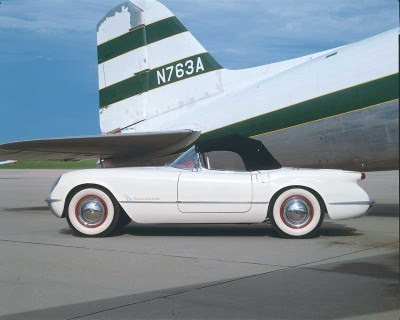While the style of a car can be as important for some as well that the car goes, it was not until 1927, when General Motors hired designer Harley Earl, the style and design of cars became important for manufacturers American cars. What Henry Ford did for automobile manufacturing principles, Harley Earl made car design.Taking his name from the corvette, a small, anti-maneuverable frigate (credit for the name goes to Myron Scott), the first Corvettes were virtually handbuilt in Flint, Michigan Chevrolet at the Center for Customer Delivery, now an academic building at the University of Kettering. The outer body is made of fiberglass after the revolution, elected in part by contributions steel remnants of war.
Under this new body is radically Chevrolet standard components, including the "Blue Flame" in line six cylinder engine trucks, two-speed Powerglide automatic transmission, drum brakes and Chevrolet regular car line. Although the engine production increased slightly, thanks to a unique triple carburetor to the intake of Corvette, the performance of the car has been determinedly.
There have been six generations of the Corvette to date, sometimes called C1 through C6.
C1 (1953-1962)
1953 Corvette
The first generation is the most commonly by fans as an "axis solid", based on the fact that the independent rear suspension (IRS) was not available until 1963. The first generation began in 1953 and ended in 1962.
With production limited by the fact that all of them were built and assembled side, the 1953 Corvette at 300 is the rarest and most sought after year.
The 1953 Corvette highlighted a body of fiberglass innovators who did much for a car light, which can be more easily molded into complex shapes construction vehicles traditional steel. Despite some initial production problems, the car was a strong performer.

Here are the specifications for the Corvette 1953:
Vehicle Specifications
Convertible
Among axes, 102.0 inches
Length, in.
167.0
Width, in.
72.2
Track inches
Front: 57.0 rear: 59.0
Height, in.
51.3
Stopping weight, pounds
2,850
Mechanical Specifications (2-door convertible)
Suspension
Front: Independent; upper and lower A-arms, coil springs, antiroll bar, tubular hydraulic shock absorbers
Rear: Live axle semi-elliptical leaf springs, hydraulic shock absorbers tubular
Wheels / tires
6.0x15
Brakes
Front: 11 inch drum
Rear: drum 11 inches
Transmission
2-speed Powerglide
Standard axle ratio
3.55:1
Specifications Engine
Type OHV V-6
Scrolling, liters / cu inch 3.85/235.5
Bore x stroke, 3.56 x 3.95 inches
3 Fuel Management Carter sidedraft
Horses power @ 150 4200 rpm
Par @ rpm, 223-2400
Published performance numbers
Acceleration
150 hp, 2-sp automatic
0-60 mph, SEC
11.0
0-100 km / h sec
41.0
1/4-mile SEC
17.9
Source: Road & Track
Production of vehicles and base prices
Type Car
Production
Price
2-door convertible
300
$ 3,498.00

No comments:
Post a Comment